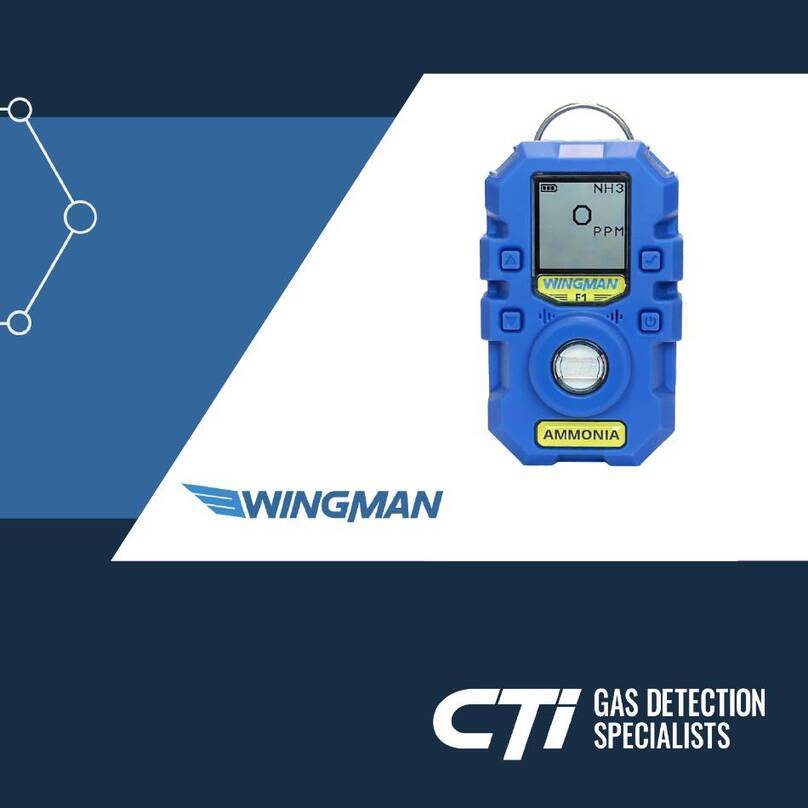
7
GG-VL2-NH3
Operation
Start-up
Before applying power, make a nal check of all wiring
for continuity, shorts, grounds, etc. It is usually best
to disconnect external alarms until the initial start-up
procedures are completed. Recommended sensor
stabilization time is 5 minutes before making any
adjustments.
Note: The GG-VL2-NH3 sensor must be zero-
calibrated upon startup. Follow the Zero
Calibration instructions on this page. Sensor can
be response tested immediately after the initial
zeroing.
Note: Do not response test with propane or MAPP
gas, as these can shorten sensor life!
Response Test:
1. One person exposes each sensor to 1% or 2% NH3
calibration gas.
2. The second person stays at the control panel to
determine that each sensor, when exposed to the
gas, is connected to the proper input and responds,
causing appropriate alarm functions.
The GG-VL2-NH3 is designed with a unique safety
signal latching feature. When the signal reaches 1%
NH3, the signal “latches” until the concentration
drops down below approx 4,000 ppm NH3. This
prevents the possibility of a low reading when the gas
concentration exceeds the Upper Explosion Limit.
Calibration
The GG-VL2-NH3 sensor comes factory calibrated
and should only require zero-calibration adjustment
after installation. Calibration should be performed
every six months. There are two pots on the preamp
that are used for calibration (see Figure 3).
Note: Never measure sensor output in mA.
Always use mVDC or VDC voltmeter settings.
Calibration Mode: Cal mode is required for
calibrating the sensor. It clears the averaging,
latching and deadband (factory set to 8 mA).
Pressing the CAL switch enables cal mode and
the green LED will ash. To exit out of cal mode,
press the CAL switch or after 6 minutes it will
automatically time-out back to normal mode.
Zero Calibration: After the unit is installed and has
been powered up for a minimum of 1 hour, the unit
can be zero calibrated by the following:
• Be sure the unit is in clean air. When in doubt,
apply zero air gas.
• Press the CAL switch to enter cal mode. Do
not adjust the zero pot if the green LED is not
ashing.
• Adjust the zero pot until the sensor outputs 40
mVdc from Test [-] to Test [+] (see Figure 3).



























